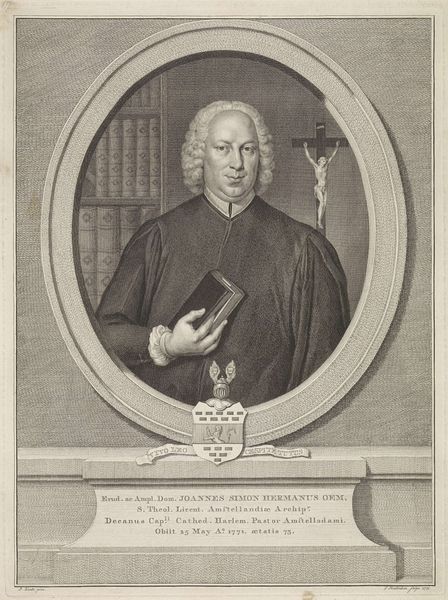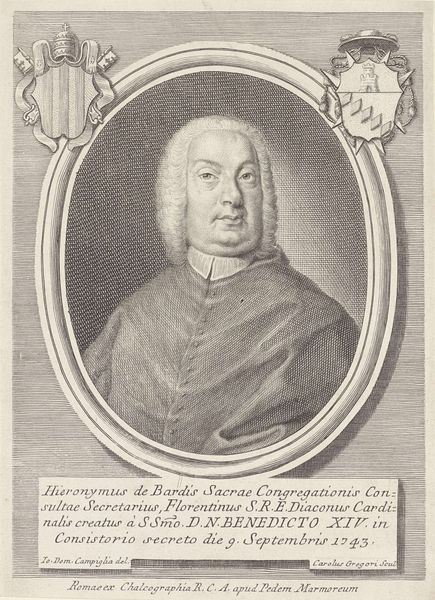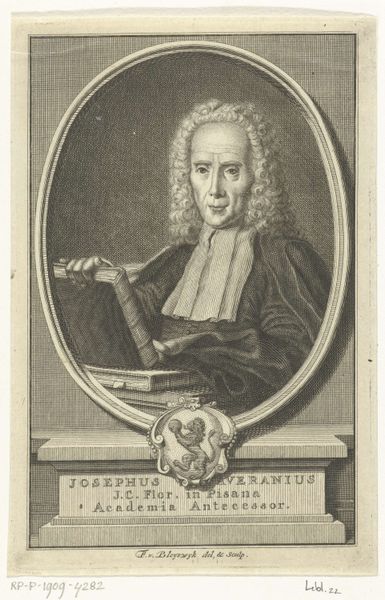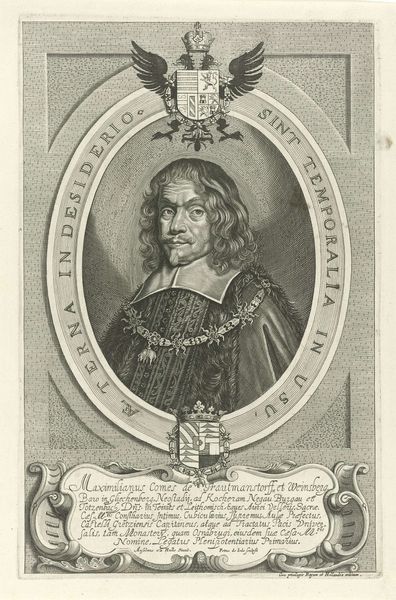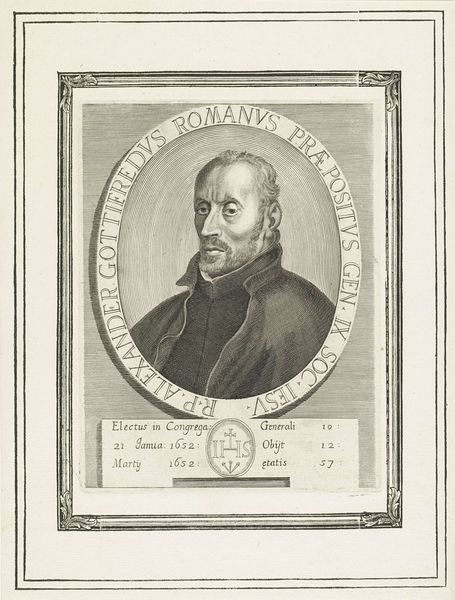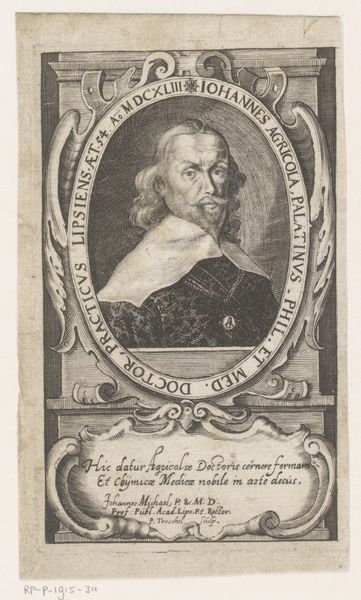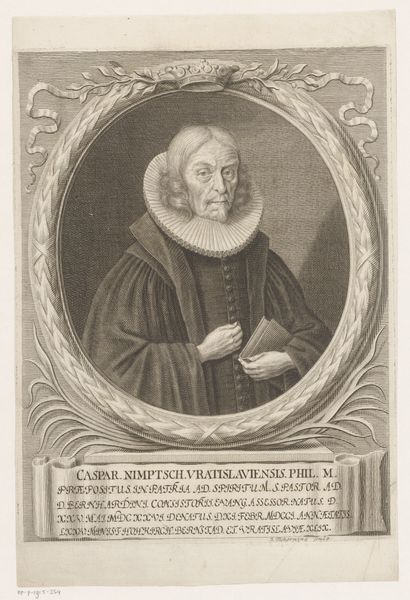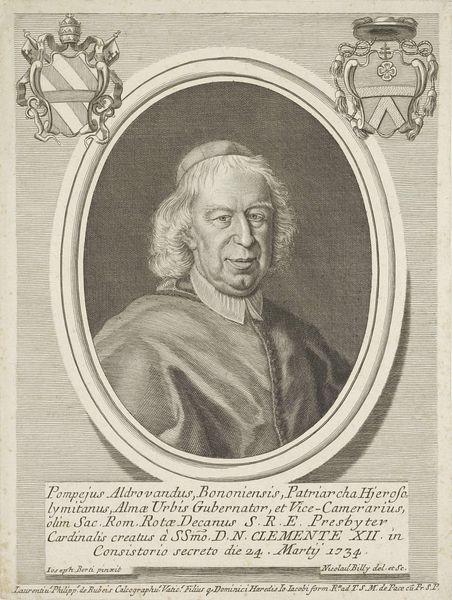
engraving
#
portrait
#
baroque
#
old engraving style
#
history-painting
#
engraving
#
columned text
Dimensions: height 286 mm, width 190 mm
Copyright: Rijks Museum: Open Domain
Curator: Welcome. Here we have an engraving titled "Portret van Philippo Standaert," made by Norbert (I) Heylbrouck around 1685-1762. This portrait is a testament to the artistry of Baroque printmaking. Editor: It's immediately striking how formal and imposing the image is. The oval frame and the inscription feel weighty, authoritative, and somewhat old fashioned. It’s like glimpsing into a very specific historical context. Curator: Indeed. Engravings such as this often served as visual markers of status, power, and lineage within elite circles. Philippo Standaert was the Abbot of Saint Peter's, so this portrait would circulate primarily amongst the upper clergy, nobility, and intellectual circles, reinforcing his position within that hierarchy. Note the inclusion of text and symbols meant to flatter Standaert and ensure he remained popular with Rome and royalty. Editor: The detail is remarkable—you can see the texture of his robes and even individual hairs in his wig. It speaks to the meticulous work of the engraver, reflecting the Baroque fascination with detail and ornament. Curator: Precisely, the engraving process itself allowed for widespread reproduction. Such portraits acted almost as propaganda, shaping public perception of individuals like Standaert and perpetuating ideas about what was acceptable at the time. We must consider who had access to these images and whose stories were not being told. Editor: Absolutely, while celebrating Standaert’s accomplishments, it silences the voices of others. Where are the women, the working class, or those who held different beliefs in these grand depictions of power? It is not simply an artwork, but a cultural artefact that solidifies power structures and can erase marginalized groups from historical narratives. Curator: That's an excellent point. Examining "Portret van Philippo Standaert" reveals much about the cultural values and socio-political landscape of the late 17th and early 18th centuries. Editor: And reminds us to always question whose stories are being told, and perhaps more importantly, whose are not. The art world too often rewards what has always been and what can make revenue for the upper classes.
Comments
No comments
Be the first to comment and join the conversation on the ultimate creative platform.

